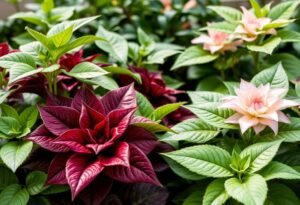Varieties of Hydrangeas and Their Blooming
Hydrangeas come in many varieties that differ in color and flower shape. The blooming of hydrangeas depends on the specific variety and growing conditions. The most popular include garden hydrangeas, panicle hydrangeas, and bigleaf hydrangeas. Understanding these differences is key to ensuring their success in your garden.
Ideal Conditions for Hydrangeas
For hydrangeas to bloom beautifully, we must provide them with the right conditions. They prefer sunny or partially shaded spots and well-drained soil. Regular watering is essential, particularly during dry spells, as hydrangeas are sensitive to water shortages. The optimal pH level of the soil should be around 5-6, promoting healthy growth.
Fertilizing Hydrangeas for Better Blooming
Fertilizing is a crucial aspect of hydrangea care to provide necessary nutrients for healthy blooming. Organic fertilizers and specialized hydrangea preparations are recommended. It’s important not to exceed the suggested amounts, which can lead to excessive leaf growth at the expense of flowers.
Pruning Hydrangeas to Encourage Blooming
Pruning is not only vital for removing dead and diseased parts of the plants but also for enhancing the blooming process. The blooming of hydrangeas is closely related to proper pruning. Depending on the variety, they can be pruned in the fall or spring. Removing spent flowers can also stimulate the plant to produce new buds.
Hydrangeas and Weather Conditions
Climate has a significant impact on blooming hydrangeas. Low winter temperatures can cause buds to freeze, and excessive heat and lack of water may lead to flower drop. Protecting plants in winter and ensuring proper watering in summer are key actions to help them survive adverse weather conditions.
Pests and Diseases of Hydrangeas – Prevention Tips
Despite their beauty, hydrangeas can be vulnerable to various issues that may hinder their blooming. Common diseases include powdery mildew and rust. Regularly inspecting plants and applying appropriate protective treatments can help minimize the risk of infection. By caring for your hydrangeas properly, you can enjoy their beauty for a long time.
Hydrangeas in Garden Design
Hydrangeas are not just beautiful flowers; they are also a fantastic way to enhance your garden design. The blooming of hydrangeas allows for creating various color compositions and styles in your garden. You can plant them in groups for striking flower beds or individually as decorative accents. It’s also great to mix them with other plants like daylilies or veronicas to create an even more interesting view throughout the seasons.
Conclusion
Taking care of hydrangeas can yield spectacular blooming results. By following the principles of fertilizing, watering, and pruning, you can ensure their success in enhancing your outdoor space. Let hydrangeas become the highlight of your garden, elevating the quality of your outdoor experience. Don’t wait, start nurturing your hydrangeas today!
Disclaimer This article is for informational purposes only and does not substitute for professional plant care advice.

















